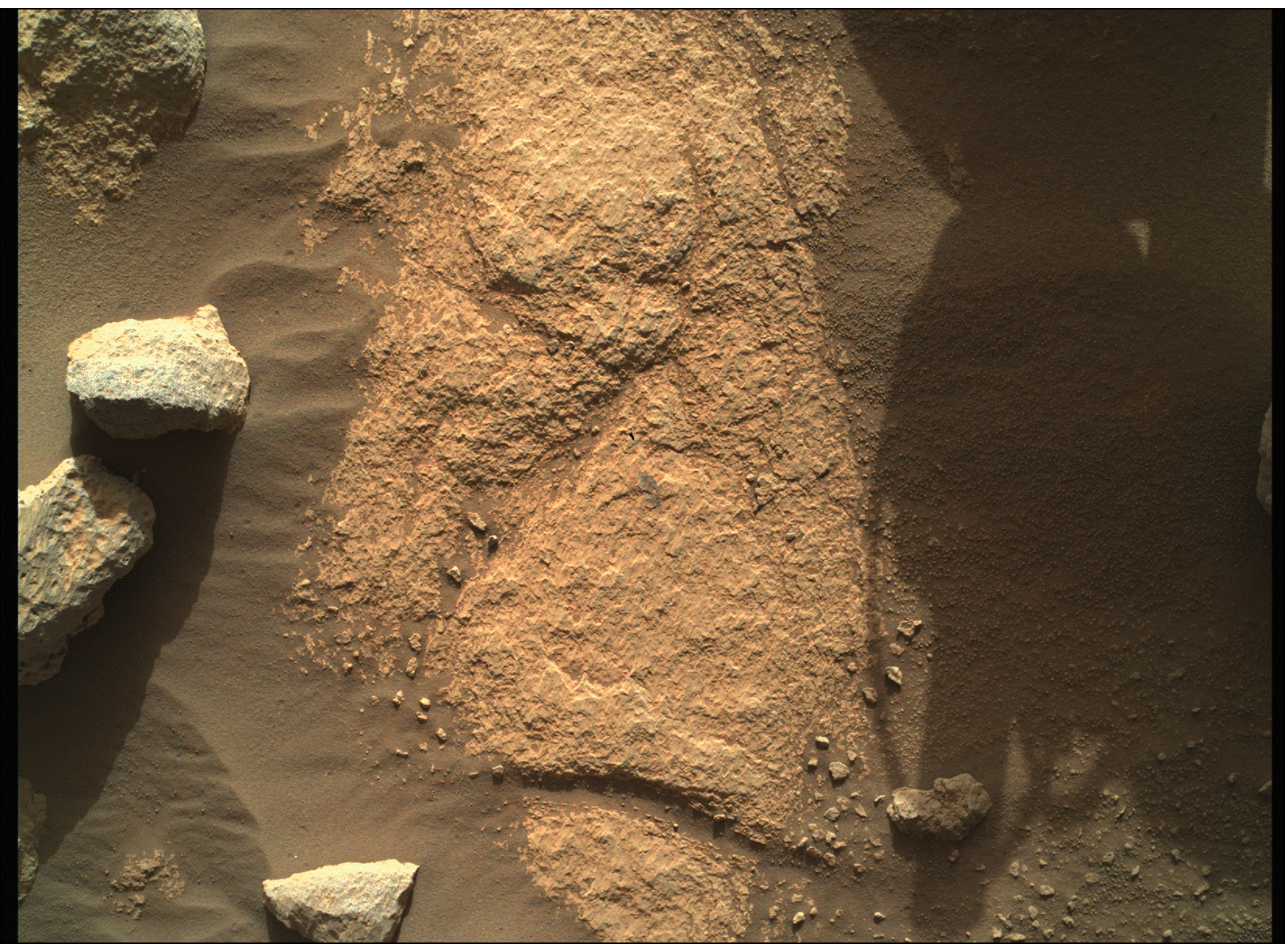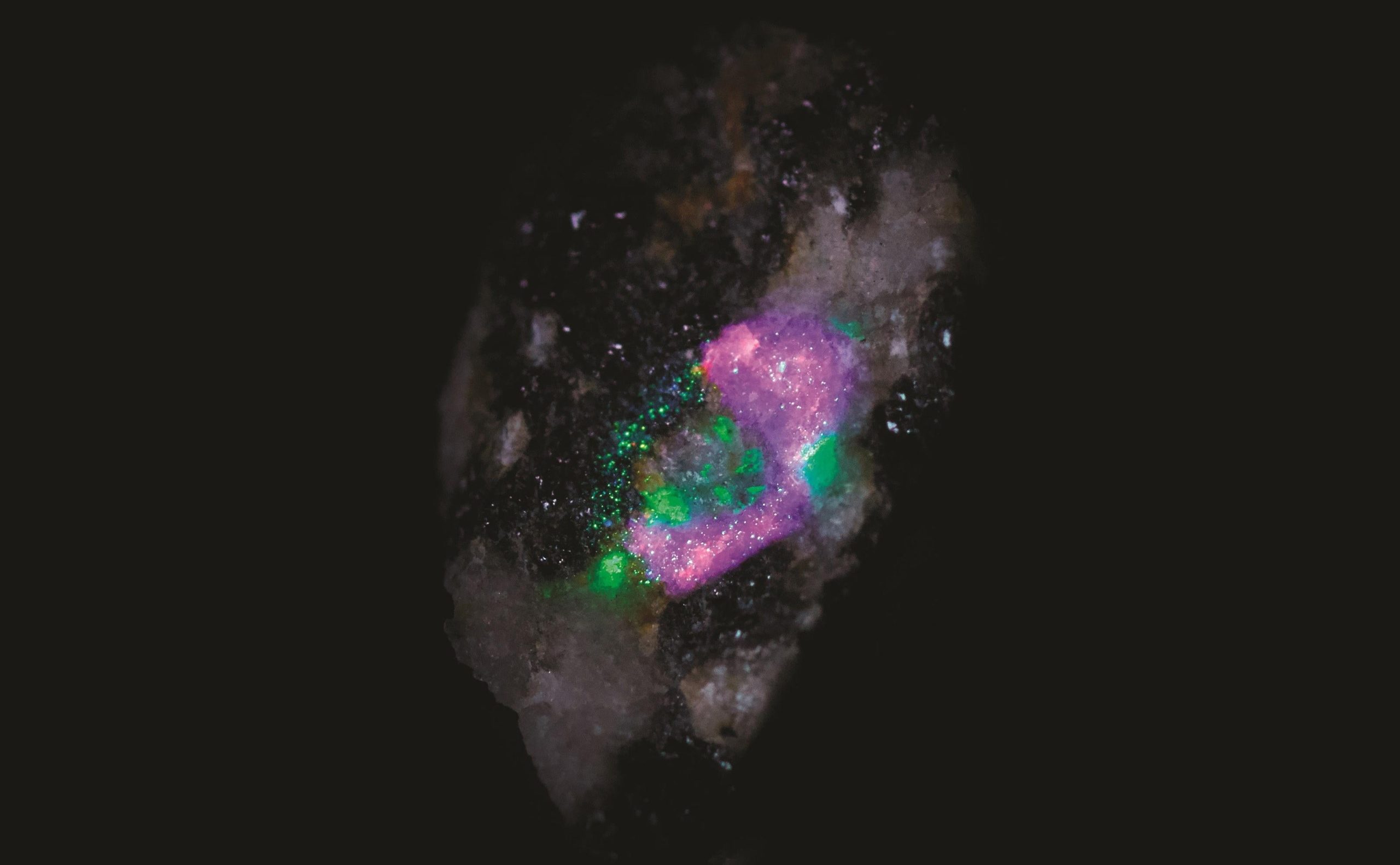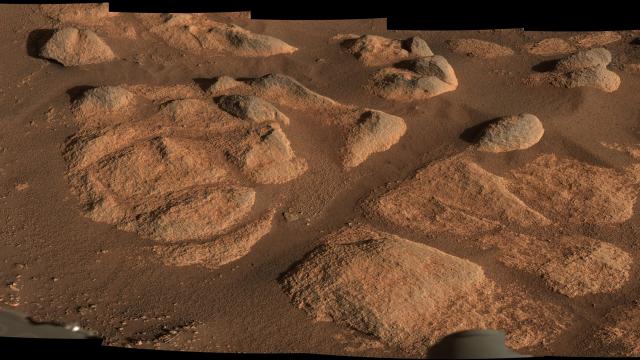As NASA’s little helicopter whirred off to its new airfield on Mars, one could practically hear the sigh of relief from Perseverance from 294 million kilometres away; it was an exhale of “thank god they’ve gone” that comes with the departure of an attention hog. A patient rover, Perseverance has been getting all its systems ready to go as the Ingenuity helicopter ran its 30-day demonstration, but now it’s finally time to begin the real purpose of this Mars mission: hunting for signs of ancient life.
From the moment the rover touched down on Mars, it was snapping shots of the landscape, getting the gist of Jezero Crater in all its rocky glory. At first, those images were grainy, but now the photos come in ever-higher definition, and they’ll need to be: NASA scientists will scrutinize the pictures to figure out what sort of Martian rock they’re dealing with.
The rock could be sedimentary (hardened concretions of minerals formed over huge swathes of geologic time) or igneous (the cooled remnants of volcanic activity, of which there has been plenty on Mars). If the rocks in Jezero turn out to be sedimentary, it’ll be good news for the search for extraterrestrial fossils, as these rocks would better preserve the biosignatures that would indicate ancient life. Of course, there’s no guarantee such life ever existed on Mars, but if it did, NASA aims to find any clues it left behind.

After all the excitement over the helicopter, it’s easy to forget about the impressive arsenal of imaging technology at Perseverance’s disposal: There’s the chemistry-sensing, laser-shooting SuperCam; the x-ray rock-reader known as PIXL; and the Mastcam-Z imager (which you may remember was taking all those photos of Ingenuity in flight).
But that’s not all. There’s also the WATSON camera on the end of the rover’s robotic arm, which will allow the folks at NASA up-close looks at the rock samples. WATSON is part of SHERLOC (NASA loves an interplanetary Victorian literature reference), which can scrutinize rock for organic compounds and minerals that indicate how the rocks formed. “When you look inside a rock, that’s where you see the story,” said Ken Farley, Perseverance’s project scientist, in a NASA release. “The more rocks you look at, the more you know.”

Eventually, scientists on Earth will get to do more than look at images of these rocks. Part of Perseverance’s purpose is to sequester the most intriguing samples for eventual shipment to Earth for further inspection. Of course, that’s a long way off still. The important thing now is that yet another cylinder on the rover — WATSON, on that robo-arm — is firing, and Perseverance is one step closer to its scientific campaign.
